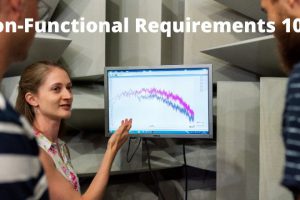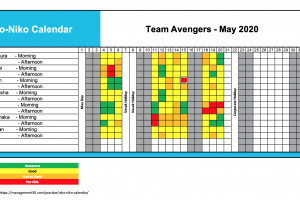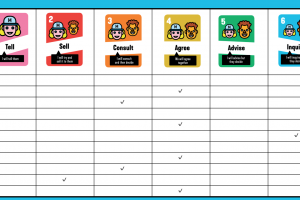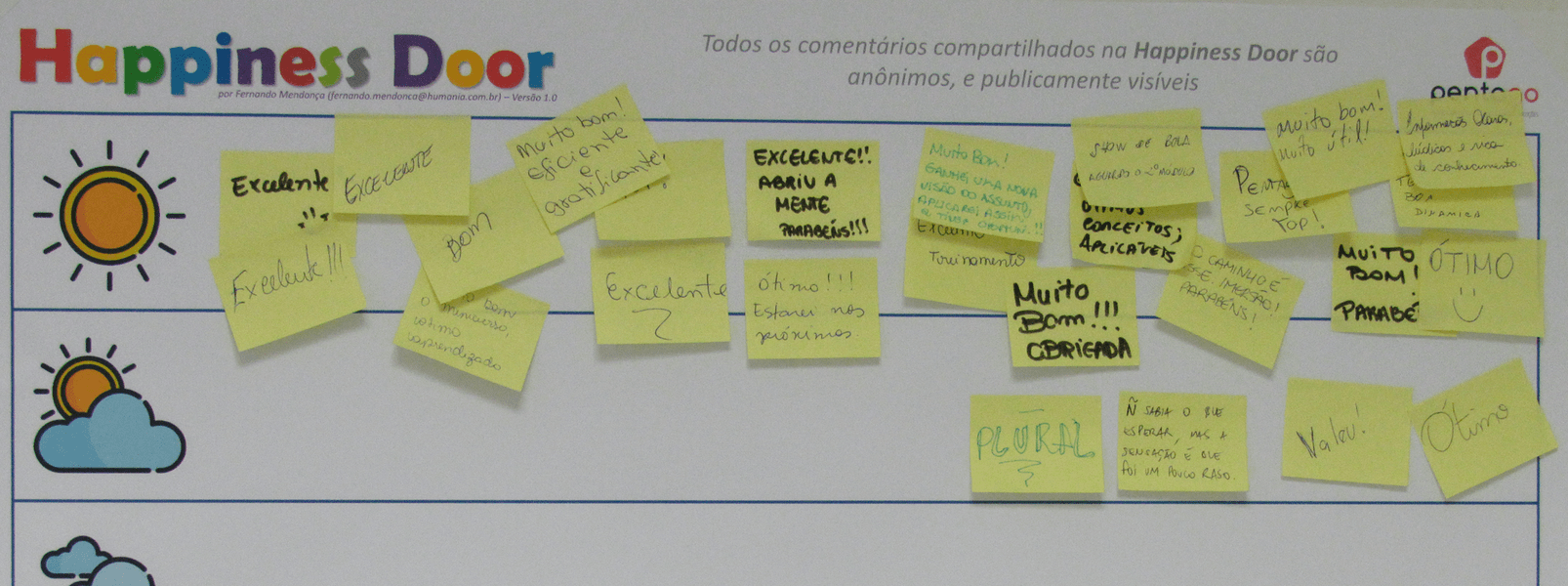
‘Happiness Door’ for Remote Training Sessions
The job of a trainer is really taxing one. Especially when conducting training targeting professional certifications such as IIBA Business analysis, PMI, or Scrum certifications. Theory-heavy certification training often runs for multiple days and it is hard on both the trainer as well as the trainees. Not only do both parties have to keep attention levels high but they also must keep their engagement and energy levels up to make it an interesting engagement. Doing a Workshop at a physical location is tough on its own even while having a close physical connection between the two parties.
Trainers use different techniques to ensure constant engagement. Group activities, presentations, videos, role-plays, home work, field activities are some of these methods. The trainers also need to make sure that there are an interesting start and end to the session as well as a smooth transition from one section to another. This is when ice breakers or check-in check-out activities come in handy. Constant breaks at logical points in time also help break monotony and tiredness.
The Covid-19 pandemic has put a new twist to this already complex environment. Individuals are self-isolating and practicing social distancing. Hence, institutes are now conduct training sessions online using collaboration and communication tools. So how can the trainers get a pulse of what they are trainees are feeling which in turn will help improve the learning experience? As a trainer and coach, I am facing a similar situation, and this is how I used the happiness door in a remote learning situation.
What is the Happiness Door?
The feeling of happiness is a subjective construct and it may depend on many factors. Happiness for an individual may depend on the context or situation that they are in, may it be in their personal or professional lives. For example, an individual though separated from his or her own family due to the Coronavirus lockdown, loaded with work and family commitments may feel stressed and unhappy. For another person being with the family might be a good thing allowing him or her to bond with their spouse, parents, and children. So it works either way. However, this feeling will evolve and change over time.
The Happiness Door is a way to make feelings and emotions of individuals visible. Now think of using this in a team environment. It is a great technique to enhance collaboration, communication, and happiness among team members by getting timely information about the pulse of the organization. As per Management 3.0, the Happiness Door combines team collaboration, employee engagement, and open and honest feedback to gauge individuals’ own happiness levels. It is a combination of the Happiness Index and the Feedback Door techniques. I will not spend time explaining them here.
The Happiness Door is usually placed at a location easily visible to everyone. In a team setting this may be a whiteboard or a poster hung on the door. Team members are encouraged to give feedback around,
- Things that are making them happy at the moment
- Things that they feel neutral about
- Things that they are unhappy about
It is not mandatory to stick to these three questions and we have the freedom of modifying it to explore factors that make participants feel excited, amused, stressed, dejected, and so on. So feel free to change these categories based on what matters to you and your participants the most.
The concept of ‘Door’ means that this technique can act as a path or a gateway to let participants in and feel comfortable in a group setting. The objective is to make sure that the participants do not feel like leaving once they come in through the happiness door. One of the major positives of the Happiness Door is the fact that every idea put up are anonymous though made visible publicly. Anyone has the freedom to put up any number of ideas as sticky notes or any other method to make it visible. There is no limitation in terms of the number of ideas or whether it is a good or bad idea. Hence, this is an ideal method for the facilitator to get an idea about the general mood in the group and determine methods to grab their attention during the session.
The Happiness Door is an ideal technique to check the mood of any team. I am explaining the use of this technique in a public online training context. But you can try applying this to your sports team, your college team or even to your agile scrum team. It is important to capture the mood of scrum team members during the course of a sprint. So at the start of any scrum event you as a scrum master can think about putting up three simple questions and allocate 5 minutes or so for the participants to put up their thoughts. Spend time reflecting on what the team members have said. It will help the scrum master and the team as a whole make important decisions to make the scrum event and even the sprint successful.
The section below describes how I use this particular technique as a check-in, pulse-check, and check-out activity during online Agile training sessions that I facilitated.
How did I use the Happiness Door?
The certification preparation training programs from IIBA are content heavy and the sessions run for multiple days. The sessions I conduct normally are 4 hours per day in duration and go on for about 12 weeks. I used a Google Jam Board to list down 3 main topics I wanted the participants to focus on and asked them to put up as many sticky notes as they like to explain what they felt. I used the Happiness Door in 3 stages as described below.
Check-in
I used to onboard the participants into the session. It made them feel comfortable, relaxed, and let out any negative energy they may have. 3 categories included,
What are you energized about today?
What are you stressed about?
What are you neutral about?
Mid-session pulse check
It is important to take an update from the participants on a regular basis. I asked them to fill the Happiness Door again before going for a 7-minute break after 1 hour and 45 minutes into the session. Now I asked the following 3 questions. I wanted to focus a bit more on the session and the content in this instance as I felt it was important for me to structure the rest of the session accordingly.
Which learnings are you most excited about now?
Which learnings are you least excited about?
Which topics need further exploration?
Check-out
I used the Happiness Door exercise to create a logical ending to the session to get an overall understanding of how the remote learning session went, what made them happy, sad, and mad about it. The following were the last 3 questions in my 3rd Happiness Door board.
What did you love about the session?
What are you puzzled about?
What are you not happy about?
Below are some images of results from the happiness door exercise. Just look at the thoughts put up by the participants. There were key facts which helped me understand what they are facing at home, what they are feeling and what they are doing to make them happy. I was also able to devise quick strategies to engage with the participants more. For example I had earlier planned to play a video for 5 minutes but then decided to eliminate it as the level of interaction when playing a video would be less. Instead, I selected to do a group activity in a breakout room creating a case study scenario on the fly. The participants were much more enthused and enjoyed the opportunity to interact and learn from one another.
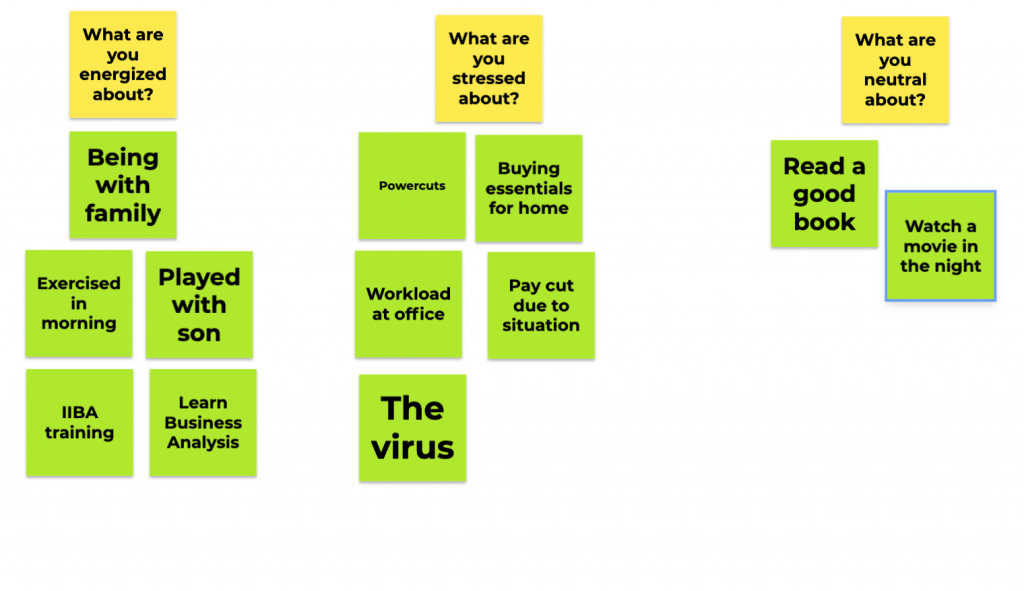
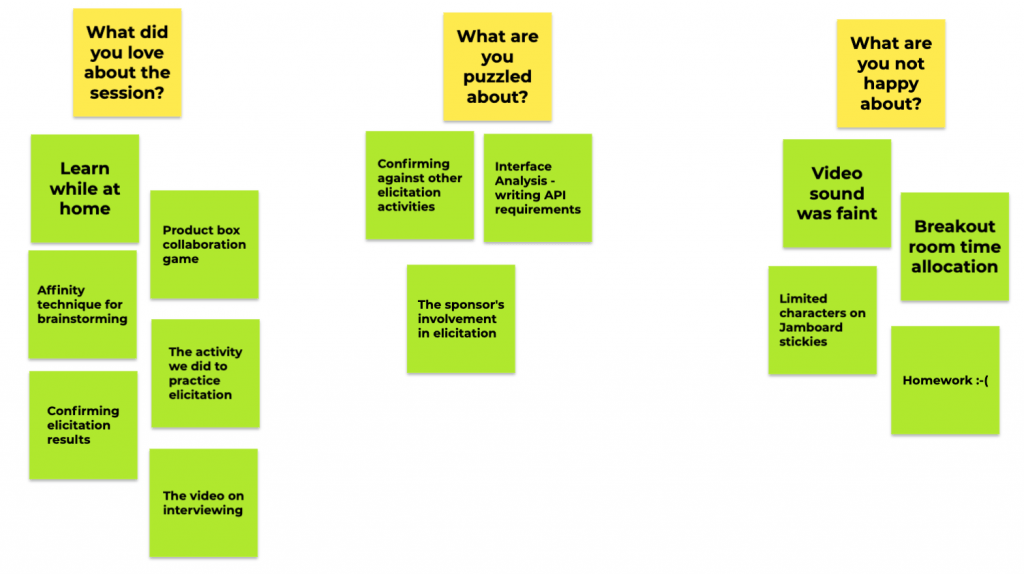
Learning & Actions
Key learnings and action items from the exercise are as listed below.
- It is a great way to ease the participants into a session
- It is a great opportunity to understand how the participants are feeling about the session
- It provides insights on what is going well, what is not right and what needs to change mid-way through a session even
- It provides a quick opportunity for the trainer to inspect and adapt
- It is a good opportunity to leave the session in a positive note
- It gives direction to the trainer on what might need to change in terms of logistics, structure, content, exercises and the overall feeling about the session
- The participants feel more comfortable, engaged and love the opportunity to compare what they feel with what the others in the group are feeling
- In terms of next actions,
- The participants decided that this was a great technique to practice in their own work and project environments when having a remote meeting
- I as the trainer identified immediate areas for improvement with regards to online collaboration and group exercises which I was able to work on to improve before the next session
Have you used the Happiness Door for your remote training sessions or meetings? How did it help you break the ice? How did it help ease apprehension and increase the amount of participation? Did you use any other techniques to keep your participants engaged? I’d like to hear about your experiences!

